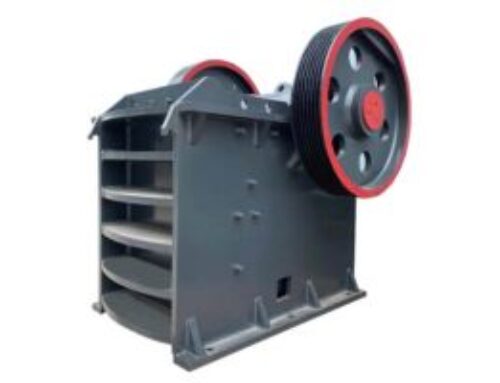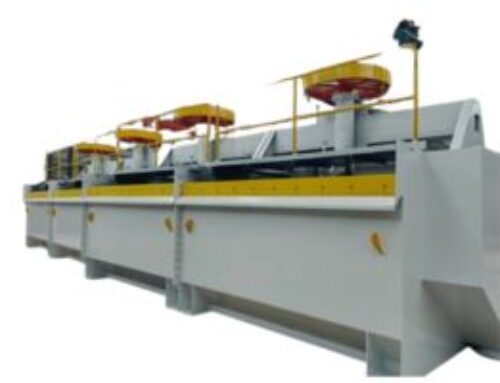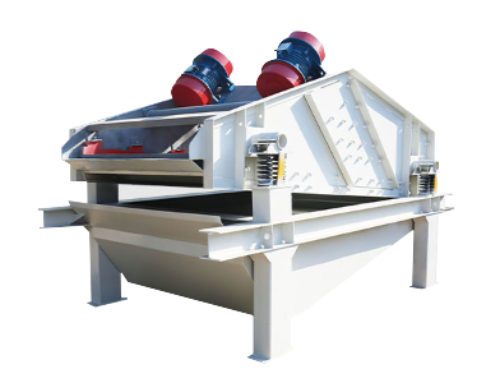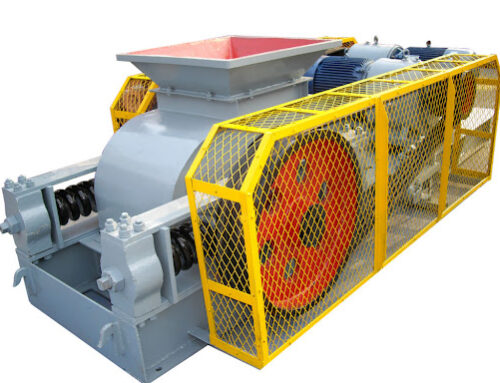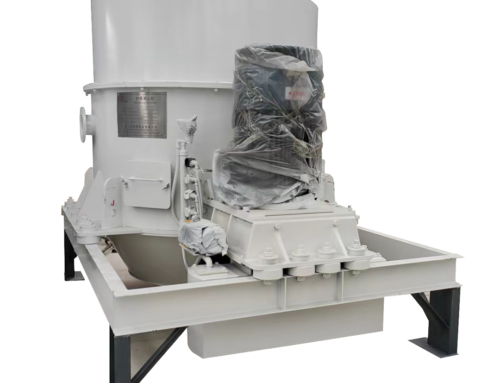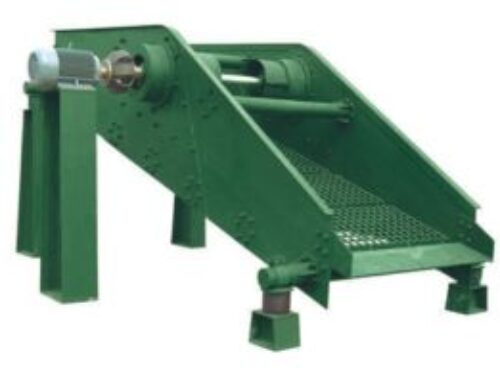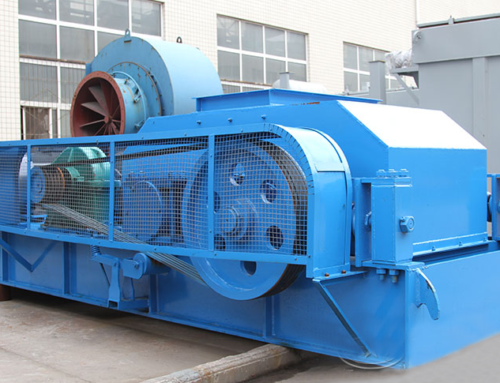What is a heavy duty vibratory feeder?
Heavy duty vibrating feeder is a widely used equipment in industrial production.
Structural aspects
It usually consists of material trough, shaker, spring, transmission device and other parts. The trough is usually made of sturdy steel, which can withstand the weight and impact of a large amount of material. The shaker is the core component to generate vibration, through a specific vibration mode to make the material in the trough constantly moving forward. The spring plays the role of buffer and support to ensure the stability of the equipment operation.
In terms of performance benefits
1.Large feeding capacity: it can efficiently convey a large amount of materials to meet the needs of large-scale production, such as in large-scale mines, building materials factories, etc., the materials can be quickly transported to the next link.
2.Uniform feeding: through reasonable vibration design, the material can be uniformly distributed in the conveying process, to ensure the stability of the subsequent production equipment feeding, which is conducive to improving product quality and production efficiency, such as in coal screening, ore dressing and other operations, to ensure that the material is uniformly given to the receiving device.
3.Stable amplitude: far beyond the resonance state work, stable amplitude, reliable operation, even in the face of different characteristics of the material, but also to maintain a stable feeding effect, reduce the amplitude fluctuations caused by uneven feeding or equipment failure.
4.Strong adaptability: it has good adaptability to all kinds of materials, including lumpy, granular and powdery materials, and can be widely used in metallurgy, coal mine, mineral processing, building materials, chemical industry, abrasive and other industries.
5.Simple structure: the overall structure is relatively simple, without complex transmission components and too many intermediate links, which makes the installation and maintenance of the equipment are more convenient, reducing the difficulty of installation and maintenance costs.
6.Convenient operation: for example, by adjusting the eccentric block can be convenient stepless adjustment of the feeding volume, according to the actual production demand at any time to change and control the material flow, easy and flexible operation.
7.Low noise: the noise generated during operation is relatively small, which is conducive to improving the working environment and reducing the impact of noise on the health of operators.
8.Low power consumption: high power factor, good performance in energy saving, can reduce power consumption in the production process, saving energy costs.
9.Low operating costs: the equipment itself is economically priced, coupled with low maintenance costs, low power consumption and other factors, making it in the whole life cycle of low operating costs.
10.Long service life: the sturdy structure and stable performance reduce the damage caused by vibration and abrasion of the equipment, prolong the service life of the equipment, and reduce the frequency and cost of replacing the equipment in the enterprise.
11.Prevent material clogging: some heavy vibrating feeder adopts special grid design or bar gap adjustable structure, which can effectively prevent material clogging and ensure smooth feeding, for example, it can prevent the wear parts from being worn out by the small materials, separate the small materials and increase the output, and it can also be equipped with optional variable frequency speed motor to adjust the frequency so as to change the output, which is convenient for the control of the feeding quantity, and there is no need to start the motor frequently.
12.Enclosable design: If the enclosed body can prevent dust pollution, which not only meets the requirements of environmental protection, but also maintains the cleanliness of the working environment and reduces the impact of dust on the equipment and operators.
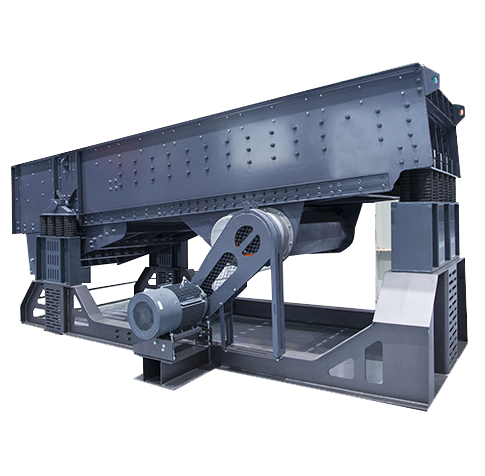
Areas of application
一. Mining Industry
1.All kinds of metal mines: in iron ore, copper, gold, lead and zinc mines and other metal mines, heavy vibrating feeder can evenly transport the mined large ores from the ore bin to the crusher for preliminary crushing. For example, in large open pit iron ore mines, the heavy duty vibrating feeder can continuously and stably feed the jaw crusher to ensure the efficient operation of the whole beneficiation production line.
2.Non-metallic mines: For coal, limestone, marble and other non-metallic mines, heavy vibrating feeder also plays an important role. Such as in coal mining, the raw coal will be conveyed to the screening equipment or transport belt to improve the efficiency and automation of coal production.
二. The building materials industry
1.Cement production: in the process of cement production, heavy vibrating feeder can transport limestone, clay, iron ore and other raw materials to the mill for grinding. Meanwhile, in the conveying link of cement clinker, it can also ensure that the clinker is stable to the next process. For example, in large cement production line, the accurate feeding of heavy vibrating feeder is crucial to ensure the quality of cement and the continuity of production.
2.Sand and gravel aggregate production: In quarries and sand and gravel aggregate processing plants, the heavy-duty vibrating feeder conveys the mined raw stone to the crusher for crushing, and then conveys the crushed sand and gravel to the screening equipment for grading. It can withstand the impact and weight of large stones and adapt to the harsh production environment.
三. Metallurgical industry
1.Iron and steel making: In iron and steel making plants, heavy vibrating feeders can convey furnace materials such as iron ore, coke, limestone, etc. to blast furnaces or converters. For example, in large-scale iron and steel combines, heavy duty vibrating feeder ensures accurate supply of furnace charge and improves production efficiency and product quality.
2.Non-ferrous metal smelting: for the smelting of aluminium, copper, zinc and other non-ferrous metals, the heavy vibrating feeder can convey raw materials such as ores and concentrates to the smelting furnace, providing a stable supply of materials for the smelting process.
四. Chemical industry
1.Fertiliser production: in the fertiliser plant, the heavy vibrating feeder can convey raw materials such as phosphate ore and potassium salt to the reactor for chemical reaction. For example, in the production of phosphate fertiliser, the heavy vibrating feeder conveys phosphate ore evenly to the sulphuric acid reaction tank to ensure that the reaction is fully carried out.
2.Chemical raw material processing: in chemical raw material processing plant, heavy vibrating feeder can convey various chemical raw materials such as soda ash, caustic soda, sulphur, etc. to the processing equipment to meet the needs of chemical production.
五. Electric power industry
1.Thermal power generation: In thermal power plant, heavy vibrating feeder conveys coal from coal bunker to coal mill for crushing, and then conveys coal powder to boiler for combustion. For example, in large-scale thermal power plants, the stable operation of heavy-duty vibrating feeders is essential to ensure the continuity and reliability of power generation.
2.Biomass power generation: In biomass power plants, the heavy duty vibrating feeder can convey biomass fuels such as straw and wood to the boiler for combustion and power generation. It can adapt to biomass fuels of different shapes and sizes to ensure an even supply of fuel.
The working principle of heavy duty vibrating feeder is as follows:
Generate excitation force: Heavy vibrating feeder is usually driven by the motor through the triangle belt to drive the active shaft, and the gear on the active shaft meshes with the passive shaft to rotate, which makes the main and passive two eccentric shafts rotate in the opposite direction at the same time. When the eccentric shaft rotates, centrifugal force will be generated due to the role of eccentricity.
Transmission of excitation force: the excitation force generated by the shaker is transmitted to the feed trough and other movable parts.
Cause vibration: Under the action of the excitation force, the feed chute body and other movable parts of the forced continuous circular or nearly circular motion.
Material conveying: when the feeding trough vibrates, the material placed on the trough will be subjected to inertia force, friction and so on. With the vibration of the trough, the material will be thrown, slid or rolled forward continuously on the inclined surface of the trough, so as to realise uniform, timed and continuous conveying from the storage bin to the receiving device.
In addition, the frequency and amplitude of vibration can be changed by adjusting the eccentricity of the eccentric shaft and the rotating speed of the motor, which in turn can regulate the conveying speed of the material and the feeding volume to meet the demands of different production processes.
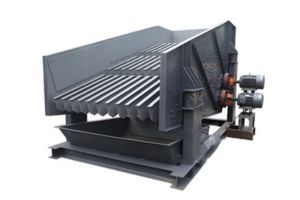
Frequently asked questions about heavy duty vibratory feeders:
一. Equipment operation problems
1.Unstable feeding quantity: it may be caused by the failure of vibration motor, improper adjustment of vibration force and change of material characteristics. For example, vibration motor damage will lead to vibration amplitude and frequency changes, thus affecting the stability of the feed amount; material humidity or particle size changes may lead to changes in the fluidity of the material in the trough, which in turn affects the feed amount.
2.equipment vibration abnormality: may be due to the installation is not solid, shaker failure, spring damage and other reasons. If the installation foundation is not flat or loose fastening bolts, it will lead to additional vibration during the operation of the equipment; shaker bearing wear or eccentric block off will make the vibration out of balance, causing abnormal vibration; spring aging or broken can not play the role of buffer and support, which will also lead to vibration abnormalities.
3.Material clogging: common causes include uneven material size, too fast feeding speed, irrational trough structure, etc. Large materials or debris may get stuck. Large materials or debris may be stuck in the narrow part of the trough, resulting in blockage; feeding speed over the handling capacity of the equipment, the material is easy to pile up in the trough; trough angle design is unreasonable or the inner wall smoothness is not enough, will also increase the risk of material blockage.
二. Maintenance issues
1.How to carry out routine maintenance: routine maintenance mainly includes checking the running status of the equipment, cleaning the surface of the equipment, tightening bolts and so on. Regularly check whether the temperature and sound of the vibration motor are normal, observe the flow of materials in the trough, and clean up the debris and accumulated materials in the trough in time; keep the surface of the equipment clean to prevent the accumulation of dust and debris from affecting the heat dissipation; regularly check whether the fastening bolts are loose, and ensure that the equipment is firmly installed.
2.Replacement cycle of wearing parts: the wearing parts of heavy vibrating feeder mainly include vibrating motor bearings, springs, liners and so on. The replacement cycle of the vibrating motor bearing depends on the frequency of use and working environment, generally ranging from thousands of hours to tens of thousands of hours; the service life of the spring is also related to the working load and environment, usually need to be replaced once in a few years; the wear and tear of the lining plate depends on the hardness of the material and the particle size, and it should be replaced in time when the wear and tear is serious.
3.Maintenance precautions: When carrying out maintenance, the power supply should be cut off first to ensure safety. For the vibration motor and other electrical components, moisture and water should be avoided; replacement of wearing parts, the original parts or reliable quality alternatives should be used to ensure the performance and reliability of the equipment. At the same time, regular comprehensive inspection and maintenance of equipment, timely detection and resolution of potential problems.
Heavy duty vibrating feeder has become an indispensable and important equipment in modern industrial field with its excellent performance, reliable quality and wide application. It plays an irreplaceable role in promoting the efficient and stable operation of industrial production, and contributes solid strength to the industrial development of mankind.

